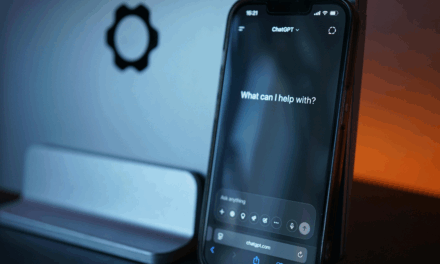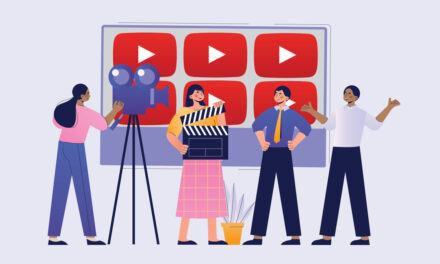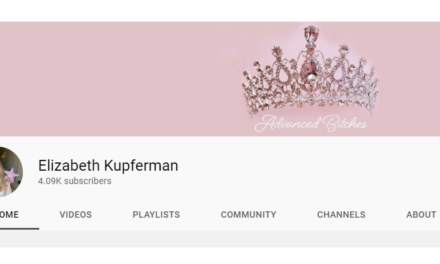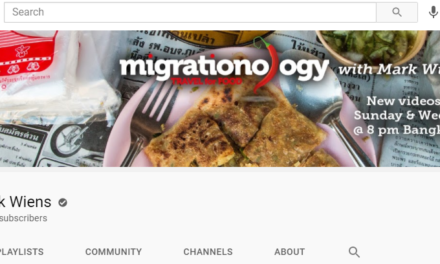Educational video resources have proven to be versatile and reliable tools to engage audiences in most creators’ content strategies. But it can be difficult to discern how to pick the right types of video formats to gain attention and elicit reactions from your viewers.
To help, I’ll explain some of the most popular types, tell you what makes them tick, and share some examples. So let’s jump right in.
1. Interviews
In an interview-style video, you can feature experts and other well-known people discussing a topic related to your niche. You also can use them for digesting crucial, timely, or complex information.
Interviews with reputable subjects also can make your content a go-to resource for reliable, trustworthy information. A versatile format, they may merit a regular place on your content schedule.
Interview-style videos with popular people or experts can grow your audience and make your content a go-to resource, says Victor Blasco of @YumYumVideos. #CreatorEconomy #AudienceBuilding Share on XExample: Tom Ward of The Tom Ward Show talks with popular internet personality Valkyrae. It is one of his most highly viewed videos.
Example: You don’t always need the biggest names. The Sorting Myself Out hosts interviewed Dr. Gregg Henriques, a professor of graduate psychology at James Madison University, about a new framework for psychology. The almost two-hour conversation included split and shared screens.
2. Video tours
Give your audience a glimpse into your space to give them a grounded perspective of your content creation. You also can let viewers explore other spaces related to your content tilt. You could take them to a museum exhibition, an exotic place you’re visiting, walk them through a building, a town, etc. Video tours are effective at educating and cultivating engagement because you are literally guiding them through a space.
Video tours are particularly useful when you want to give your viewers a deeper perspective of significant, distant, or meaningful locations for you and what you do.
Example: In this video, Sanne Vliengenhart of booksandquills lets her viewers tour London museums. She doesn’t film one long scene of a single museum. Instead, she shares brief cuts from several locations as she narrates off-screen.
Example: In Welcome to My Zen Art Studio Tour, artist/entrepreneur Ergo Josh walks viewers through how and why he set up his new workspace.
3. Whiteboard animations
Most of us have attended physical classrooms where the teacher wrote the lessons on a board (chalk, white, or smart). Boards like those are a valuable teaching device.
Whiteboard animated videos are born out of the same concept. These are animated explainer videos where the astounding visuals are literally sketched in front of the viewer’s eyes, and they are second to none when it comes to explaining complex ideas to your audience in a visually engaging and entertaining way.
Since the illustrations come to life in a single, continuous take, the format has proven ideal to tackle complex and detailed topics. This style lets learners see an entire process, which allows for better viewer retention. They also are ideal for quickly delivering a lot of information.
Whiteboard videos are ideal to tackle complex and detailed topics, says Victor Blasco of @YumYumVideos. #ContentEntrepreneurs #VisualContent Share on XExample: The whiteboard video format technique is even in the name of the YouTube channel, Marko of WhiteBoard Finance. Here he takes out his marketer in How To Manage Your Money (50/30/20 Rule)
Example: We created this video for our client Stack That Money. It illustrates a story from the perspective of a character who represents the target audience, from their problem through the explanation of STM’s solution.
4. How-to videos
How-to videos are the bread and butter of a video social media feed – 86% of viewers say they regularly turn to YouTube to learn something new.
Showing is far more valuable than using text to tell someone how to do something. How-to videos stimulate viewers to take the bull by the horns and take action. A well-made how-to video can break anything into a few simple, manageable steps that delight your audience. How-to videos also can help in search engine optimization as users often look for help in how to complete a task or execute a project.
Example: How To Change Your Life in 3 Weeks [for 2022] from All Things Koze walks viewers through the steps to do what the title says.
Example: Laura Vitale of Laura in the Kitchen shares how to make chocolate-covered strawberries in this video.
TIP: Add detailed timestamps in your description. Viewers then can more easily start and stop the video based on what they need or want to know at that moment.
5. Motion graphics
Some processes are hard to communicate, as they involve many aspects that are not simple to retain. The motion graphic technique lets you use graphic elements (such as colors and shapes) to convey your message clearly.
These videos are less about stories (like whiteboard or character videos) and more about showcasing data and ideas and making them legible to your viewers. It’s ideal for delivering information that’s normally difficult to understand and memorize – complex concepts, numerical data, word sequences, calculations, etc. As most of us are visual learners, graphics, charts, and designs are essential to convey simple, accurate representations of that information.
Example: Google uses motion graphics to illustrate the why and how of its cloud Internet of Things solution.
Example: TED-Ed used motion graphics to explain the optical illusion of motion.
6. Character videos
Custom-designed animated characters bring a touch of familiarity and personality to your videos. Viewers can easily identify and attach to sympathetic characters and engaging storytelling that reflects their own personalities, preferences, and needs, making for a thoroughly compelling animated piece.
Create character videos that reflect your audience's personalities, preferences, and needs, says Victor Blasco of @YumYumVideos. #ContentBusiness #CreatorEconomy Share on XCharacter videos fit the kind of content that calls for a friendlier approach. They can work well for easing viewers into a challenging topic as well as synthesizing and framing essential issues in a non-confrontational way.
Example: My company created this character video for Green Geeks, an eco-friendly web hosting service. It includes several characters to illustrate the many kinds of people who would be interested in the topic. It also illustrates a challenging topic – the environmental impact of the internet.
Example: Southeastern Guide Dogs uses an animated dog named Pip and his experience at Canine University.
Watch out
For educational content of all kinds, it’s hard to find a better medium than video. But making great educational videos starts with picking the best video formats for your audience and style for your content brand. And when you do that, videos can both attract and retain viewers who appreciate the value of the information you make available.
About the author
Victor Blasco is a digital marketing expert, Co-Founder & CEO ofYum Yum Videosand Yum










